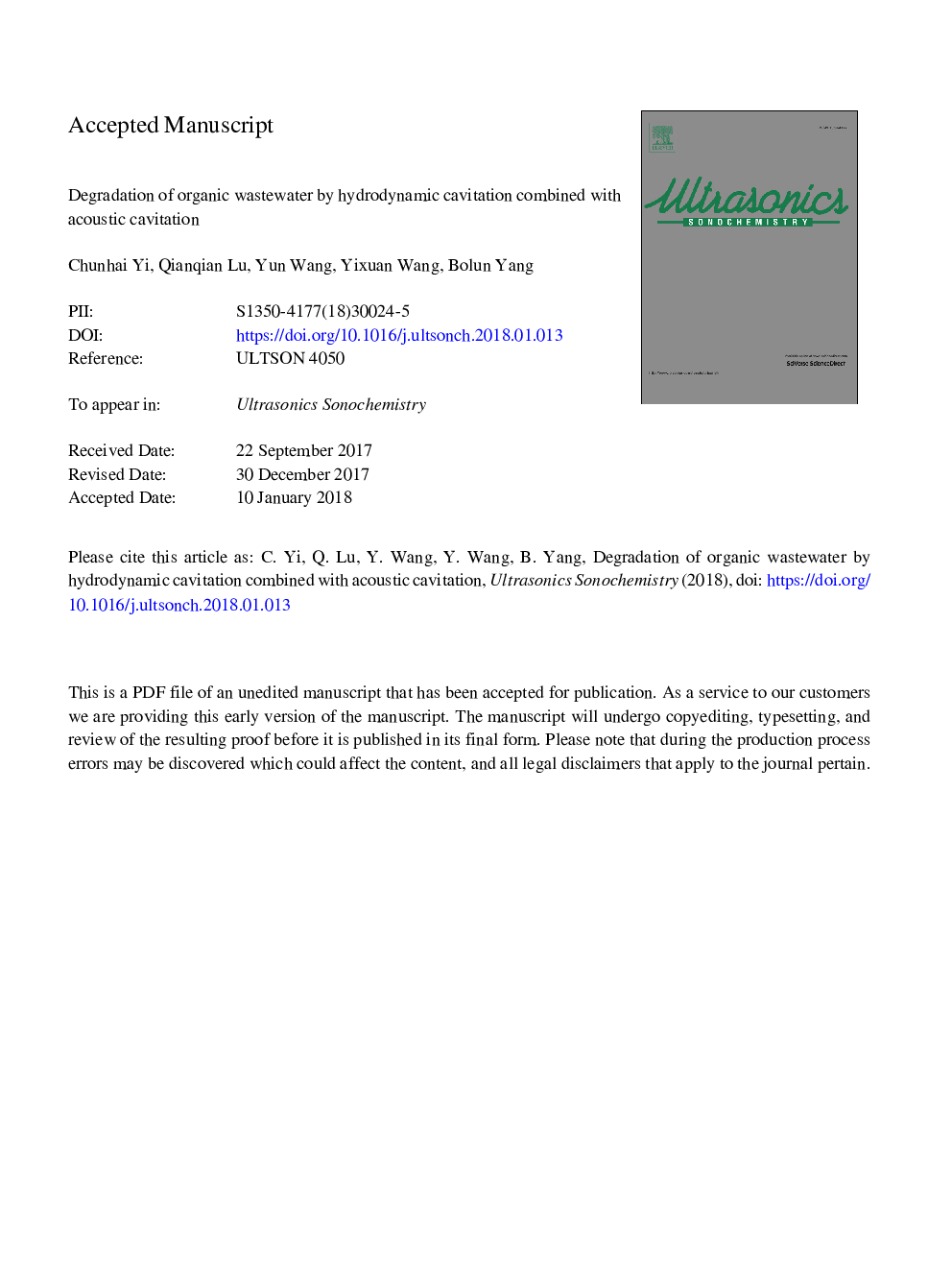| Article ID | Journal | Published Year | Pages | File Type |
|---|---|---|---|---|
| 7703032 | Ultrasonics Sonochemistry | 2018 | 39 Pages |
Abstract
In this paper, the decomposition of Rhodamine B (RhB) by hydrodynamic cavitation (HC), acoustic cavitation (AC) and the combination of these individual methods (HAC) have been investigated. The degradation of 20â¯L RhB aqueous solution was carried out in a self-designed HAC reactor, where hydrodynamic cavitation and acoustic cavitation could take place in the same space simultaneously. The effects of initial concentration, inlet pressure, solution temperature and ultrasonic power were studied and discussed. Obvious synergies were found in the HAC process. The combined method achieved the best conversion, and the synergistic effect in HAC was even up to 119% with the ultrasonic power of 220â¯W in a treatment time of 30â¯min. The time-independent synergistic factor based on rate constant was introduced and the maximum value reached 40% in the HAC system. Besides, the hybrid HAC method showed great superiority in energy efficiency at lower ultrasonic power (88-176â¯W). Therefore, HAC technology can be visualized as a promising method for wastewater treatment with good scale-up possibilities.
Related Topics
Physical Sciences and Engineering
Chemistry
Chemistry (General)
Authors
Chunhai Yi, Qianqian Lu, Yun Wang, Yixuan Wang, Bolun Yang,
